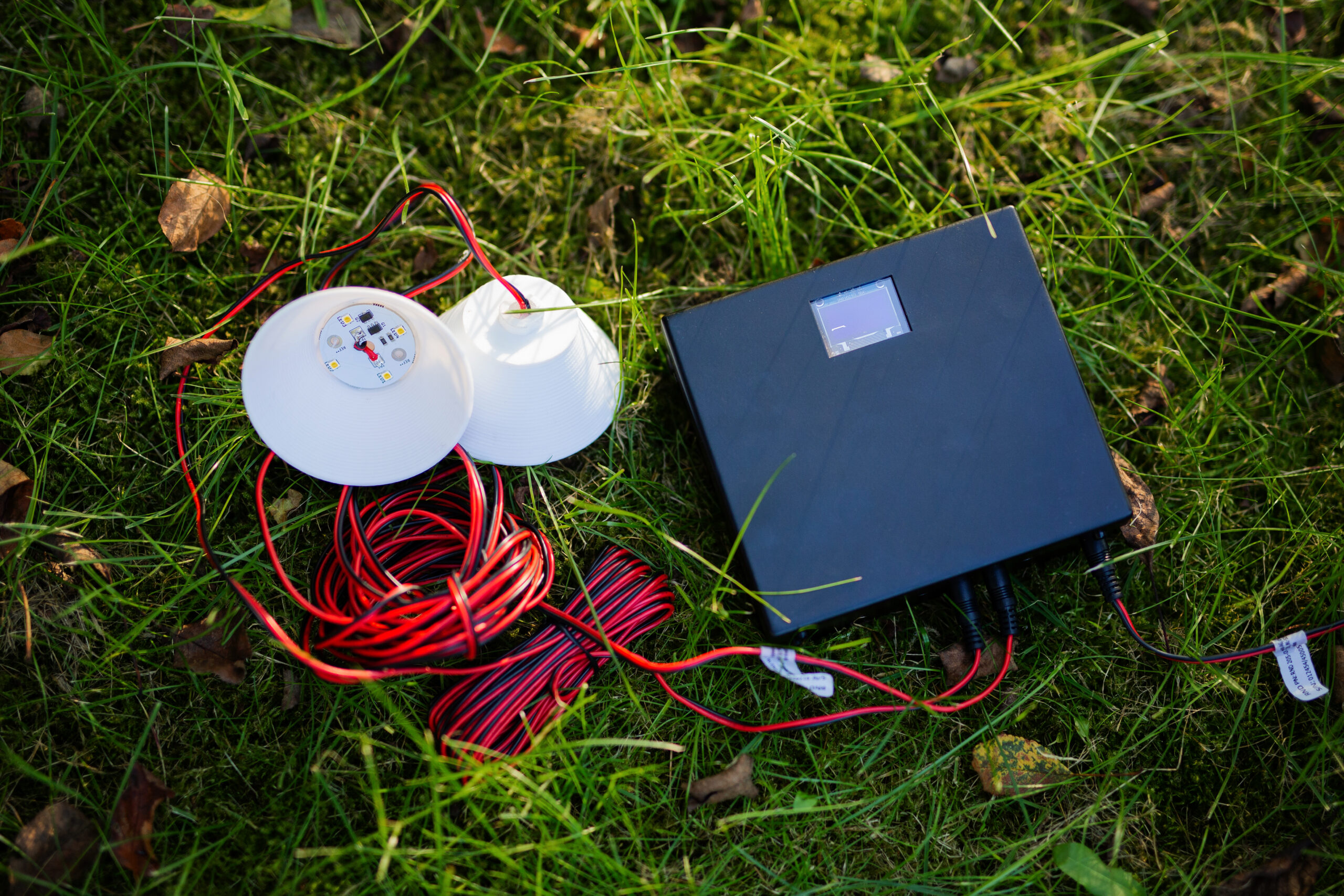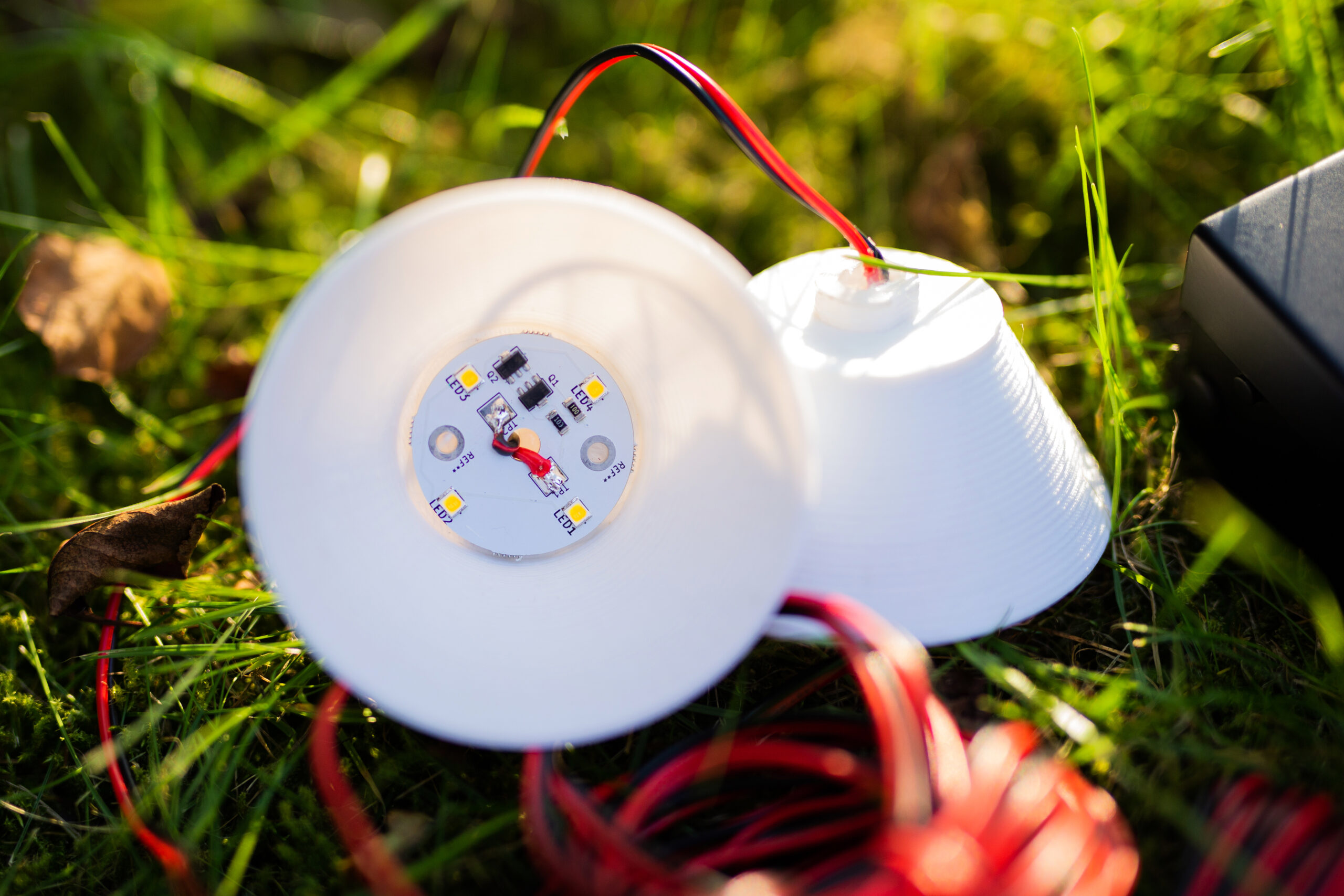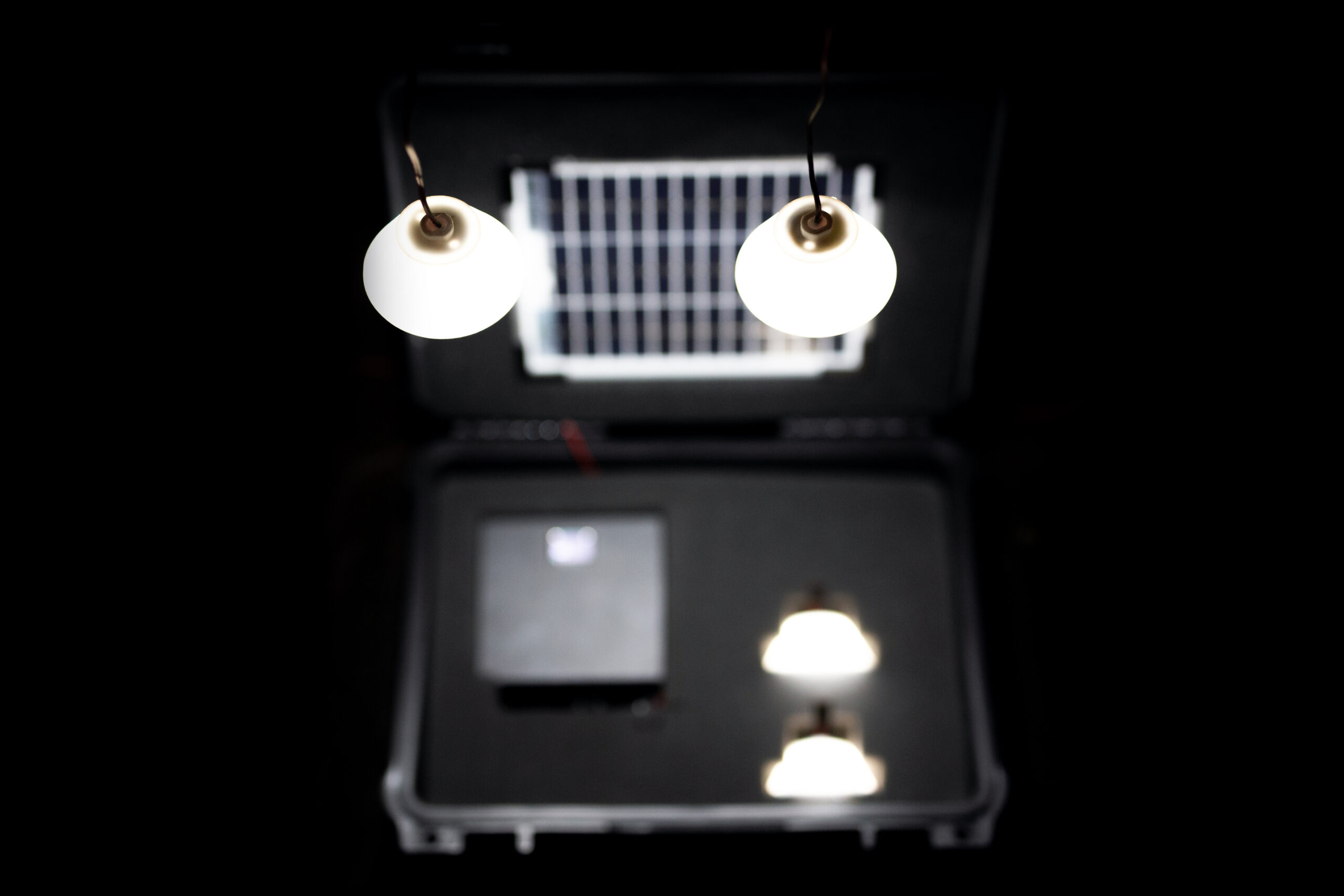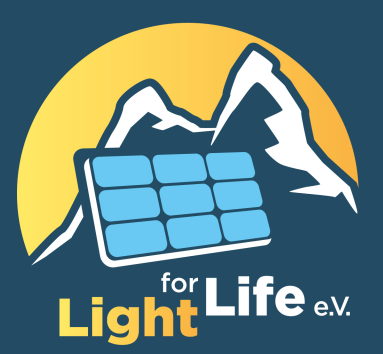Solution
The solution is to use sunlight to generate electrical energy, which is stored during the day in stored in high-quality lithium batteries during the day. In the evening, it is used to power highly efficient LED lights are operated.
For this purpose, we have developed a cost-effective, efficient and durable system. We, that is the Light for Life e.V. team with experts who have invested more than 1,000 hours in their free time to develop this solar system. to develop this solar system:
Technical Data
- 20W solar panel (mono- or polycrystalline)
- Full charge on normal sunny day
- 4 x 3.8 Ah LFP cells for >6 h operation with all 4 lights, number of cycles > 4,000
- Outputs for 4 LED lights
- Nichia LEDs (efficiency world champion)
- Per luminaire 140 lumens luminous flux
- USB charger integrated for e.g. smartphones
- OLED display
- Battery box made of sheet steel, powder coated
- Production costs from 120,- Euro
Balance of results
- The equipment is financed by donations
- Designed for an average house in Nepal (2-4 rooms)
- Best light for learning and working
- One LED light replaces 3 kerosene lamps, saving 9l of kerosene per month. Four lights can be operated at the same time.
- To produce the same luminous flux with petroleum that we achieve with 4 LED lights 430 l of kerosene would have to be used per year! Corresponds to 400,- USD with a per capita income of at best 1.000,- USD / year
Manufacturing
We are able to assemble and test the electronics ourselves. This allows us to be flexible and independently manufacture devices and introduce optimizations.
Early warning system
The system is already capable of sending operating data via SMS to a cell phone or PC. to send. So that it is also possible to send by SMS warnings of e.g. earthquakes or thunderstorms to the devices and display them as icons or text. In the future we will be able to link the devices to national warning systems.



